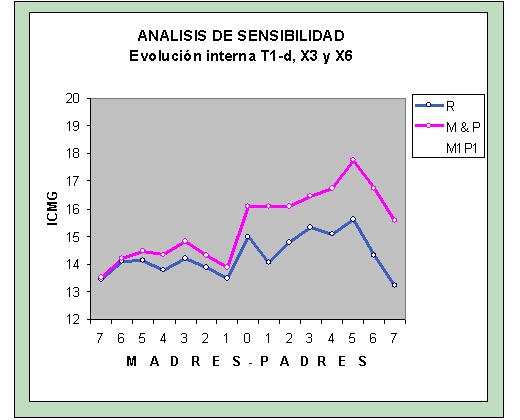2. Flynn effect and other statistical studies
Many arguments help to understand why this subject remains controversial; they arise from both the intrinsic sophistication of intelligence and the different initial premises of the models.
The Flynn effect shows an increase in intelligence quotients in different countries. The results are generally accepted.

The problem comes from the causes and interpretation of the facts presented.
The most common views are:
2.a) Lack of a unique definition
This view of the concept of intelligence is somewhat negative.
2.b) Francis Galton and regression to the mean
Francis Galton (1822-1911), the cousin of Charles Darwin, indicated the necessity of using statistical methods to verify theories; thus, in his work Natural Inheritance (1889) he introduced the concept of line of regression from a survey comparing the statures of parents and their children.
In his descriptive analysis, tall parents have tall children, but not so tall on average, and short parents have short children, but not so much. He denominated these observations a regression to the mean.
Perhaps the phenomena in which the famous regression to the mean takes place needs a multifactor analysis approach.
2.c) The Bell Curve and correlations below 0.5
Richard J. Herrnstein and Charles Murray mention many references to essays on human intelligence in their book The Bell Curve with different answers about evolution, including the Flynn effect. For the elaboration of their ideas, they assume an approximate correlation of 0.5 remaining in between genetics and environmental influence.
There is no general agreement on the stability of these capacities throughout life, although it seems the average environmental influence is higher in early ages than maturity, which is contrary to expectations.
2.d) High correlations in twin studies
Numerous works try to resolve the controversy on genetic and environmental influences on intelligence throughout the analysis of identical twin’s data.
These have many advantages as they avoid some elements that could cause differences in intelligence. Even the Flynn effect vanishes, as it would operate in both identical twins.
Identical twins correlate up to 0.87 as far as intelligence is concerned; in non-twin siblings, correlation oscillates around 0.55. This info comprises of an experience of Jensen in 1972, which led to his primary conclusion that 80% of the variance in a population of the intellectual quotient (IQ) depends of inherited factors.
Logically, if Jensen were correct, intelligence would have an innate nature, although it would not mean predetermination because there are factors like the genetic combination by the laws of Mendel.
The concept of hereditariness in a strict sense establishes the relation between the observed and the expected correlations. In those cases, in which the expectation is less than the unit, it would be necessary an upward tweak for the degree of hereditariness.
2.e) Flynn effect and complex econometric models
Studies of sizeable statistical complexity have also tried to resolve the controversy. Two of them are interesting. One is eminently theoretical and the other experimental.
The article Heritability Estimates Versus Large Environmental Effects: The IQ Paradox Resolved, by William T. Dickens and James R. Flynn, affirms to have solved the problem introducing variables with temporary feedback. However, it is easy to reach high statistical results working with strongly correlated variables plus temporal feedback.
On the other hand, this article tries to explain the observed Flynn effect or gain in IQ throughout different generations; specifically, the 20 points increase that occurred between 1952 and 1982 in some countries.
The second study, discriminating pre- and postnatal factors, from the Medical School of the University of Pittsburgh, concludes the prenatal maternal environment exerts a powerful influence on intelligence.
